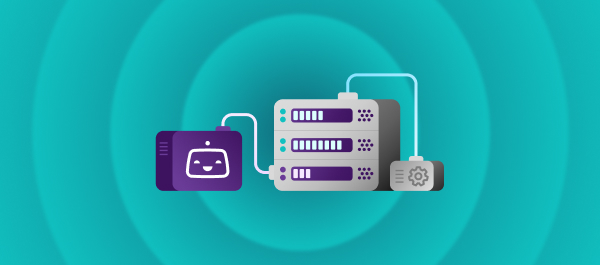Speed isn’t everything in software development, but getting high quality apps out fast is still crucial. That’s where DevOps comes in: its core purpose is to streamline the delivery of apps as quickly and reliably as possible, without sacrificing quality at any stage of the process.
At the heart of DevOps automation are three essential concepts: CI, CD, and CT.
CI and CD are often used interchangeably, but each of the three concepts serves a distinct purpose. Understanding what these terms mean and how they work together is key to building efficient software pipelines that support rapid innovation.
In this blog, we’ll break down what CI (Continuous Integration), CD (Continuous Delivery/Deployment), and CT (Continuous Testing) are, highlighting their roles within DevOps and how platforms like Bitrise can help implement them effectively.
CI vs CD vs CT: What do they mean?
Continuous Integration (CI)
CI is a software development practice where developers regularly merge their code changes into a shared repository. It’s about making sure your code works as expected after each change. The process triggers automated build and test sequences to ensure that new code integrates smoothly without breaking existing functionality. The goal is to catch any potential bugs early and thus ensure the stability of the codebase.
What can CI do for you? Faster feedback, reduced integration conflicts, and improved collaboration. In other words, you can ship great software without any last-minute surprises.
Continuous Delivery / Continuous Deployment (CD)
While CI focuses on integration, CD spans the release process:
- Continuous Delivery: Automatically prepares all code changes for a potential release to production, keeping the software in a deployable state at all times.
- Continuous Deployment: Extends Continuous Delivery by automating the release process so that any change that passes tests is immediately deployed to production without manual intervention.
CD ensures faster and more reliable releases, reducing the manual overhead and risks associated with deploying software.
Continuous Testing (CT)
CT is the backbone that supports CI and CD by embedding automated tests throughout the development lifecycle. It ensures code quality by integrating performance, security, and user experience tests early and often.
- Objective: Provide constant feedback about the quality and risks of the software.
- Approach: Execute a comprehensive suite of tests at multiple stages—from local development environments to production monitoring.
- Outcome: Higher software quality and reduced chances of defects reaching end users.
CI vs CD vs CT: Different concepts working toward a common goal
Comparing CI vs CD vs CT reveals how they complement each other:
- CI makes sure that new code doesn’t break your app.
- CT helps ensure that the code is thoroughly validated, keeping it ready for release.
- CD automates and accelerates getting the validated code into users' hands.
Together, they form a continuous pipeline that enables faster innovation cycles, better product quality, and ultimately improved customer satisfaction.
How Bitrise powers CI, CD, and CT in DevOps
As a leading CI/CD platform built specifically for Mobile DevOps, Bitrise helps teams automate all stages of their software delivery pipeline.
- For CI: Bitrise offers scalable build infrastructure tailored to mobile platforms, supporting automated builds and test execution with minimal setup.
- For CD: It facilitates smooth artifact signing, packaging, and deployment to beta distribution tools or app stores, with customizable workflows supporting both Continuous Delivery and Continuous Deployment.
- For CT: Bitrise integrates with various testing frameworks and device farms, enabling continuous testing across multiple platforms and device configurations.
With its rich ecosystem and seamless integrations, Bitrise makes it easy for teams to implement CI, CD, and CT practices and accelerate mobile app releases without compromising quality.
Final thoughts
As a summary:
- CI: Implementing Continuous Integration = regular code integration with automated quality checks
- CD: Continuous Delivery/Deployment = automates and controls releases
- CT: Continuous Testing = guarantees thorough validation throughout.
Understanding how all three practices work both individually and collectively is essential for any team looking to excel in DevOps.
Bitrise makes this easier, especially for mobile app teams, by providing tailored tools and automation to support each phase of the delivery process. Embracing these practices leads to faster releases, higher quality apps, and happier users.
Ready to transform your DevOps pipeline?
Explore how Bitrise can help drive your software delivery forward with CI, CD, and CT—sign up and start for free!




